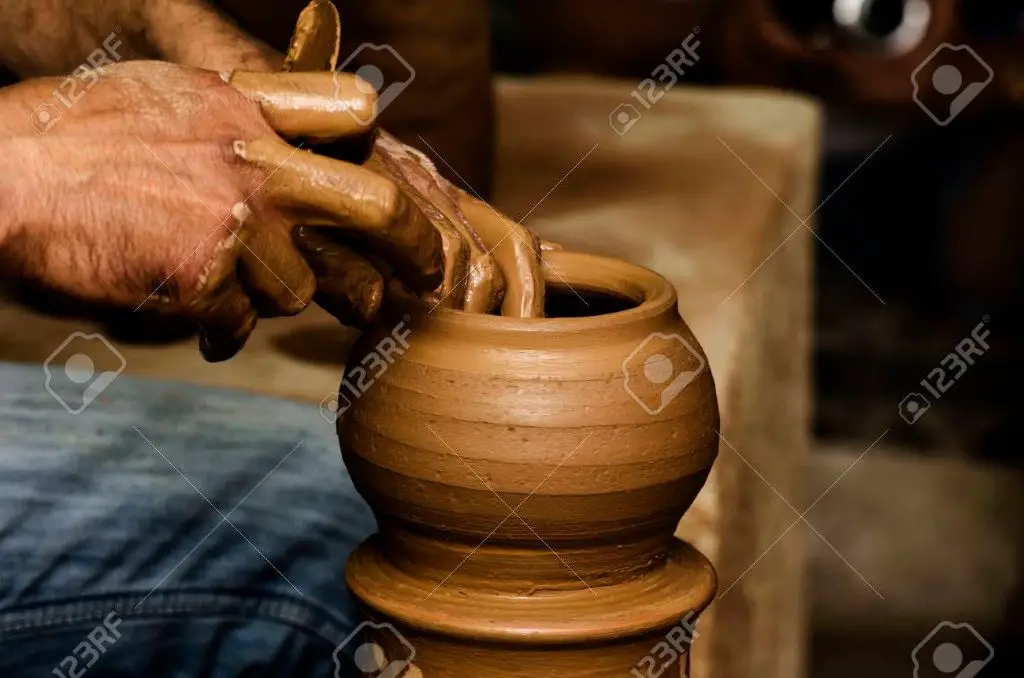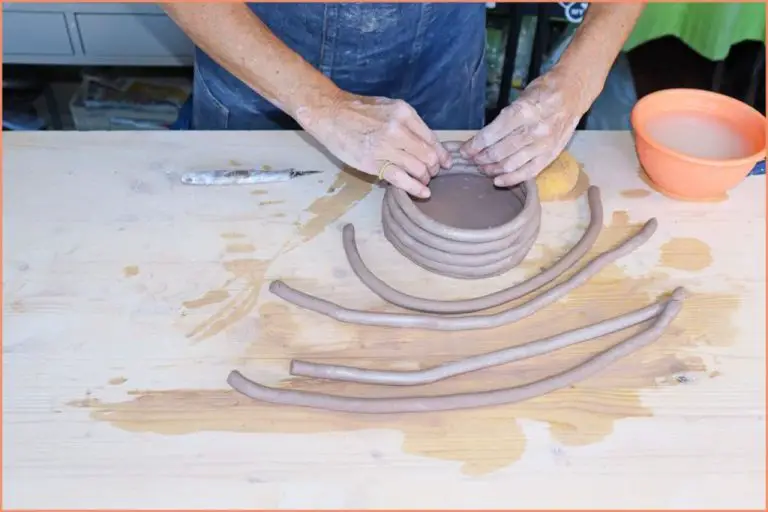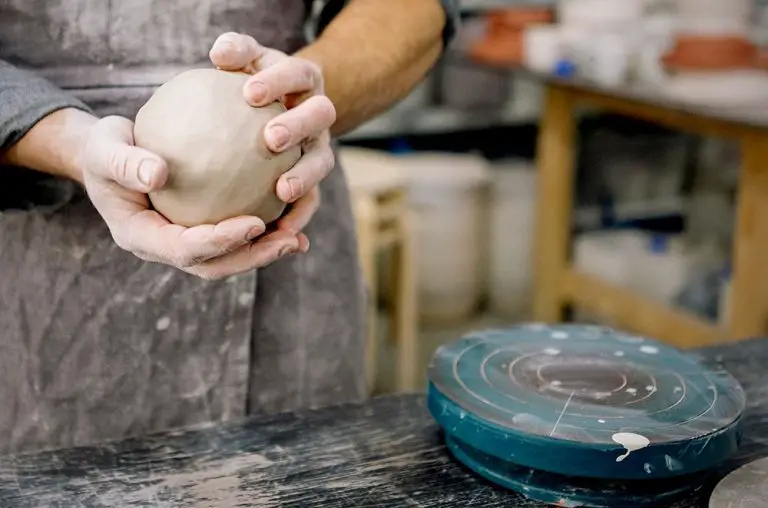Why Is Handmade Pottery So Expensive?
Handmade pottery refers to clay vessels and ceramic pieces that are shaped and decorated completely by hand, without the use of mechanical processes or assistants. Handmade pottery is often much more expensive to purchase than mass-produced ceramic items or pottery made using molds.
This article will explore the reasons behind the high prices of authentic, artisanal pottery. As each handcrafted piece requires extensive time, artistic skill, costly materials, and meticulous workmanship, handmade pottery’s value reflects the care and effort involved in its creation.
Thesis: Due to the laborious process and high production costs, handmade pottery typically commands premium pricing to account for the time, specialized skills, quality materials, and artistry required.
Time Investment
Creating handmade pottery is very time consuming. From preparing clay to firing kilns, each piece requires hours of work. According to Oxford Clay, it can take 1-2 days just to make a simple mug or bowl on the wheel. The clay must be wedged to remove air bubbles, thrown on the potter’s wheel into the desired shape, trimmed to refine edges, dried for up to a week, fired in the kiln, glazed, and fired again. Handbuilding techniques like coil building or slab construction can be even more time intensive. As explained by The Spruce Crafts, a handbuilt piece can require 2-3 days of coiling, another 2-3 days drying between layers, then 1-2 weeks drying after assembly before the bisque and glaze firings. From start to finish, each handcrafted ceramic piece requires an enormous time investment from skilled artisans.

Skills and Training
It takes potters years to develop the necessary skills and techniques to create high quality, artistic pottery pieces. Throwing pots on a wheel requires coordination, balance, and technical proficiency that can only be gained through extensive practice and training.
Skilled potters also need strong foundational knowledge in areas like clay science, glaze chemistry, and firing methods. This typically requires taking specialized pottery courses or pursuing a degree program in ceramic arts. Top art schools for pottery include Rhode Island School of Design, California College of the Arts, and Maine College of Art & Design.
In addition to technical competencies, creating unique, artistic pots and sculptures requires innate creative talent. Developing a distinctive style and elevating basic vessels into works of art takes an artistic eye and mastery over aesthetic details like form, texture, and color.
The skills needed to successfully throw, trim, glaze, and fire high quality pottery are difficult to obtain and take years of hands-on training with master potters. This intensive process is what sets professional pottery apart from ceramic crafts made by hobbyists or beginners.
Cost of Materials
High quality clay, glazes, and tools used for pottery can be quite expensive. According to Soul Ceramics, just the clay alone for pottery could cost $250-500 for 25 lbs, which is enough clay for 10-15 pieces. Glazes and specialty tools will cost even more on top of the raw clay costs (Soul Ceramics). In addition, the specialized equipment like kilns and pottery wheels required add significant costs. A good quality electric kiln suitable for firing pottery can range from $500 on the low end to over $6000 for large, top-of-the-line kilns (Pottery Crafters). Quality pottery wheels can cost $300 or more. With high costs for quality materials and equipment, it’s clear why supplies are a significant expense for professional potters.
Studio Overhead
Maintaining a pottery studio has expenses like rent, utilities, equipment, and supplies that all factor into pricing. According to the Pottery Studio Business Plan, overhead expenses include $36,000 for rent, $5,800 for utilities, $8,100 for insurance, $3,000 for advertising, and $3,600 for supplies, adding up to around $56,000 per year (https://www.bplans.com/pottery-studio-business-plan/financial-plan/). The Paint Your Own Pottery – Open a PYOP Studio Costs article notes that total studio startup costs can range from $6,500 to $17,000 when including kilns, vents, tools, and more (https://www.potteryconsultant.com/html/paintyourownpotteryarticles6.cfm). These fixed business costs mean handmade pottery must be priced higher to cover expenses.
On top of fixed overhead, there are also variable costs per piece like clay, glazes, electricity for firing, studio time, and more. One pottery studio owner in the Ceramics Studio Business Model forum estimates electricity for firing costs around $2 per piece and clay/glaze materials around $5-10 per piece (https://community.ceramicartsdaily.org/topic/20884-ceramics-studio-business-model-expenses-and-tips/). When factoring in the creator’s time, overhead, and materials, it’s clear why handmade pottery commands a higher price than mass-produced items.
Uniqueness and Quality
One of the main reasons handmade pottery commands a higher price is that each piece is entirely unique (https://www.keeeps.co.uk/blogs/potters-block/9-reasons-to-switch-from-mass-produced-to-handmade-pottery-homeware). Unlike mass-produced items that come off an assembly line by the thousands, handmade pottery is shaped individually by the hands of the artisan. Even when the potter aims to produce a series of similar items, each one will have its own character and subtle differences that cannot be replicated.
This uniqueness results in much higher quality and artistry than mass-produced pottery and ceramics. The potter has complete control over the entire creation process, and can ensure care and attention to detail in every step. Finishes and glazes can be customized, and imperfections can be minimized. The final product reflects the skill, vision, and passion of the artisan. For these reasons, handmade pottery often becomes cherished items passed down through generations rather than disposable or replaceable goods.
Small Batch Production
Unlike mass-produced pottery, which is made in large quantities to maximize efficiency, handmade pottery is produced in small batches. Potters typically make pieces one at a time, shaping each item by hand rather than relying on molds and machines. This limits how many pieces can be produced, as the process cannot be easily scaled up or sped up. According to Keeeps, handmade pottery “simply cannot be replicated by mass-manufacture.” Without the benefits of assembly line production, each piece takes more time and care to create. The small-scale nature of handmade pottery production means quantities are lower, and costs per piece are higher as a result.
Craftsmanship
Handmade pottery requires great skill, care and attention to detail. Unlike mass-produced ceramics made by machines, each handmade piece is formed and decorated by a skilled artisan using time-honored techniques. This demands higher labor costs than industrial methods, as the potter must devote considerable time to throwing, trimming, glazing and firing each individual piece.
As explained in The Value of Craftsmanship, “Craftsmanship shapes meaning and births purpose into our lives. The value of craftsmanship is critical in giving meaningful shape to our lives.” Handmade pottery exemplifies quality craftsmanship, imbuing each item with the passion and personal signature of the maker. From teapots to vases, the subtle variations and handcrafted imperfections reflect the human touch behind the work.
According to The Right Way to Price a Handmade Product, handmade items involve more effort, skill and care. The labor costs account for the many hours a potter spends wedging clay, throwing on the wheel, drying, bisque firing, glazing, decorating and final firing each piece. This meticulous process results in one-of-a-kind ceramics that showcase the potter’s technique and aesthetic.
Branding and Reputation
The best pottery artists can command premium prices for their work based on their branding and reputation. Famous ceramic artists like Pablo Picasso, whose ceramic pieces have sold for over $1 million at auction, demonstrate the high value placed on work by top creators (Masterworks Fine Art). Certain studios, like those of influential 20th century potters like Eva Zeisel, also develop strong brand recognition that buyers will pay more for. As with other art forms, the most acclaimed potters essentially function as luxury brands, where provenance and scarcity allow them to set high prices.
There is great collector appeal for works by the top American ceramic artists leading the field today, such as Chris Gustin and Akio Takamori. Prestigious awards and museum shows help elevate an artist’s reputation. Over time, the status and rarity of certain artists and styles rise, increasing demand. While factors like quality and workmanship impact price for all handmade pottery, branding and reputation enable the highest tier of potters to charge premium rates.
Conclusion
In summary, there are several key factors that contribute to the high prices of handmade pottery pieces:
Handmaking pottery is an incredibly time-intensive process that requires years of training to master the wheel, clay, glazes, and firing techniques. The raw materials and operating expenses for a pottery studio also add to the costs. Since each piece is unique and made in small batches, the pricing reflects the quality craftsmanship and artistic value, rather than mass manufacturing efficiency. The reputation and branding of the potter can also influence perceived value and pricing. Ultimately, handmade pottery carries intrinsic artistic, cultural, and historic value that makes it worth the higher costs to many collectors and consumers.
While machine-made and mass-produced pottery is affordable and readily available, nothing quite compares to the beauty and artistry of one-of-a-kind, hand-thrown pots made by a master craftsperson. Handmade pottery connects us to human creativity and our artistic heritage in a way that manufactured goods cannot. For pottery connoisseurs and collectors, the extra expense is justified by owning an original piece of functional art.



